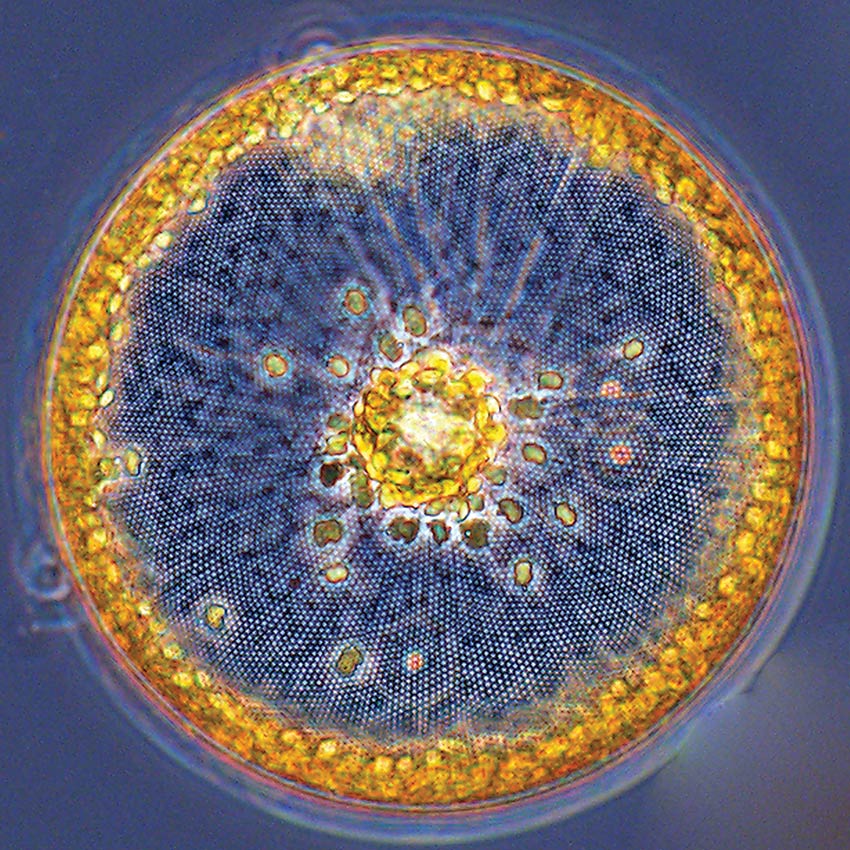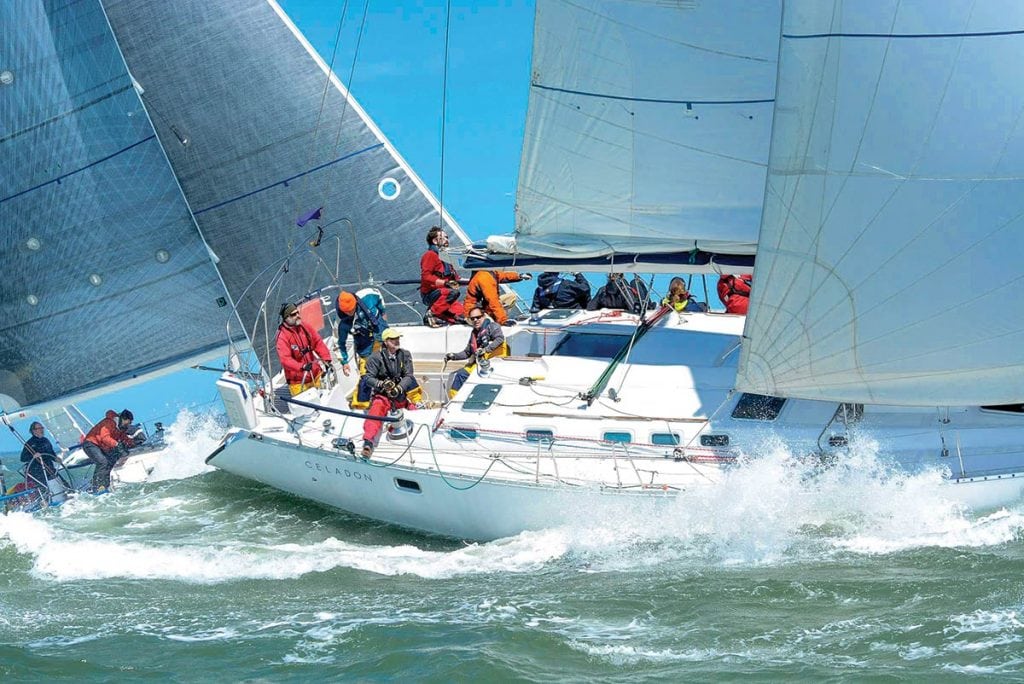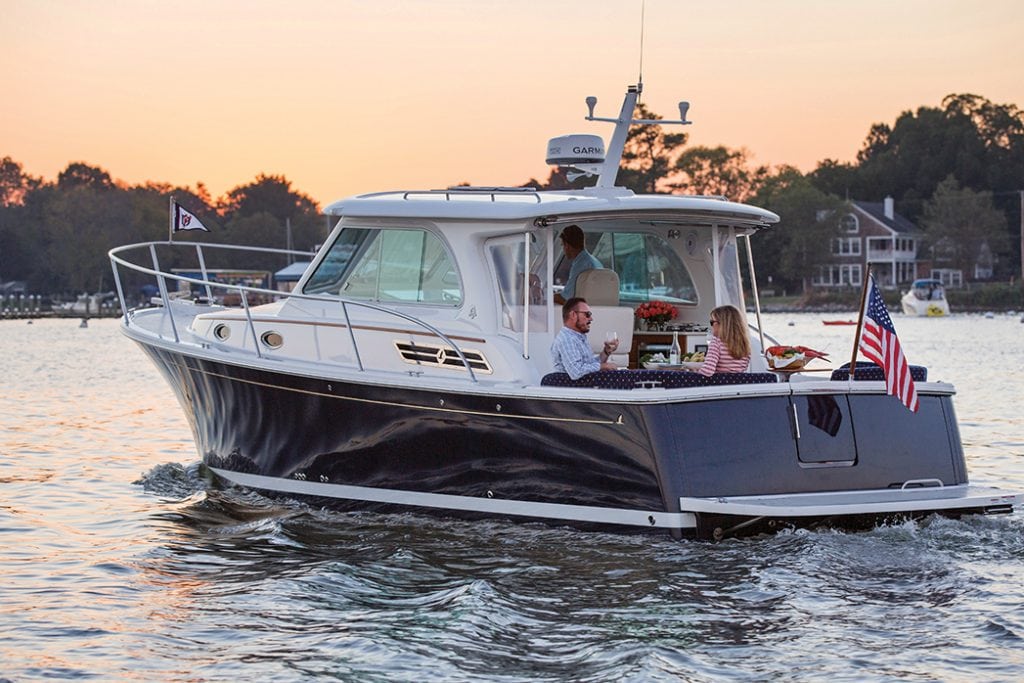Nearly invisible marine microbes play a vital role in life at sea and on land.
Stories of mysterious creatures lurking deep in the sea have long captivated our imaginations and stirred our curiosity. Bigelow Laboratory for Ocean Sciences in East Boothbay, Maine, is on a mission to show that truth is stranger than fiction—in a big way.
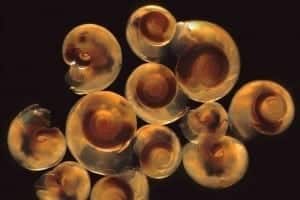
Tiny Giants: Marine Microbes Revealed on a Grand Scale is a photographic adventure featuring colorized and enlarged images of nearly invisible plants and animals that dominate the ocean. Their beauty will leave you awestruck. “Our idea behind the Tiny Giants images was to pique people’s imaginations about the invisible creatures that we study that are vital to our very existence,” says Dr. Benjamin Twining, director of research and education at Bigelow Laboratory.
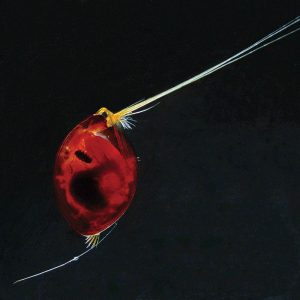
But how do you stir up interest and raise awareness about organisms so small that hundreds of thousands can live in just a single drop of seawater? You make the invisible visible. Dr. Peter Countway, Laura Lubelczyk and other Bigelow Laboratory researchers used three types of microscopes—compound-light, confocal and scanning electron—to capture 18 incredible images of marine microbes. Each of the high-powered microscopes provides a unique perspective and allows us to peer into this invisible world, but it takes a skilled and practiced hand to create the magical images seen in Tiny Giants. The incredible magnifications—some of the images are as big as four feet wide by five feet tall—offer a unique glimpse at the intricacies of these marine-dwelling microbes; their exquisite shapes and patterns appear otherworldly.
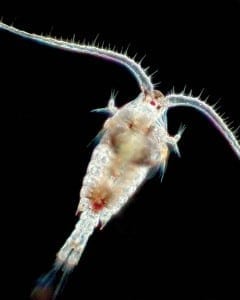
Marine microbes are the foundation of life on Earth. They produce half of the oxygen we breathe and are the base of the food chain. In fact, 98 percent of the ocean’s biomass is made up of microbial life. Given their vital role in planetary processes and balance, it is important that we understand how ocean health issues such as ocean acidification and rising sea temperatures affect these organisms. In addition, marine microbes may lead to new advances in pharmaceuticals, fuel sources and nutritional supplements. Bigelow Laboratory is the only independent basic research institution in the world that focuses on microbial oceanography, and its researchers want to spread the word about the world-class discoveries taking place at their state-of-the-art campus.
Tiny Giants has been making the rounds throughout the northeast U.S. since January 2015. The exhibit has been featured in libraries, schools and art galleries. The response has been as impressive as the images themselves. “It was delightful to wander amongst the crowd and hear people exclaim about the beauty and wonder of marine microbes,” said Darlene Trew Crist, Director of Communications at Bigelow Laboratory, at the sold-out showing at District Hall in Boston, Massachusetts. Tiny Giants had a full summer schedule in 2016 including a World Oceans Day Summit on June 8th in Newport, Rhode Island, presented by Sailors for the Sea and Bigelow Laboratory for Ocean Sciences.
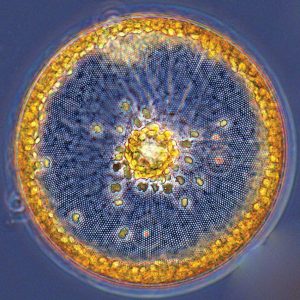
To promote unique, exciting ways to teach and learn, the Tiny Giants exhibit resided at Colby College in Waterville, Maine, throughout the 2015 fall semester. This innovative collaboration was used not only in biology and environmental science departments but also in theater, dance, art, and humanities. Educators used the exhibit to connect concepts of invisible marine microbes to their coursework. “We were excited to show the images in the Tiny Giants exhibition on campus last fall,” said Lori G. Kletzer, Colby Provost and Dean of Faculty. “Colby’s strategic partnership with Bigelow Laboratory provides world-class opportunities in marine science and climate science for our students—we knew that. The unique aesthetic for examining the natural microbial world through these photos completely reinforced the interdisciplinary approach that both our institutions value so highly.”
The wonders of the microscopic world aren’t reserved for scientists. With Tiny Giants, Bigelow Laboratory is making the mysterious marine underworld accessible to everybody. Next time you are out on the water, take a moment to think about the organized and diverse communities of tiny sea creatures that make our life possible. Check out the Tiny Giants schedule to see if there is an event or exhibit in your area at tinygiants.bigelow.org/schedule.html. Learn more about marine microbes and the cutting-edge research going on at Bigelow Laboratory for Ocean Sciences at bigelow.org.
— By Jaime Blair, Communications Consultant at Bigelow Laboratory — Article courtesy of Sailors for the Sea, Southern Boating Magazine April 2017


